Introduction to the brewing taste of Brazilian coffee beans: the story of the origin of cultural cultivation and historical varieties in Brazilian coffee producing areas
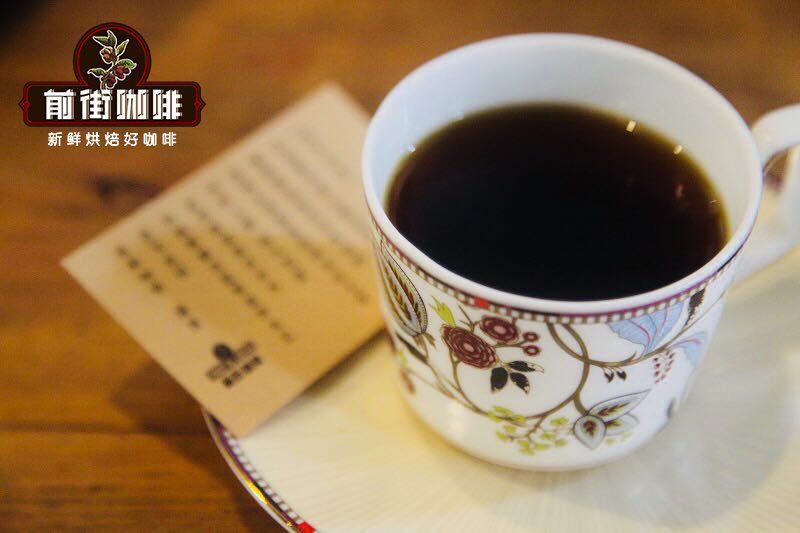
As the largest coffee exporter, Brazil is famous for its rich nutty chocolate flavor and supple taste throughout the coffee market. Next, please follow the front street to learn about Brazilian coffee from the historical origin of growing coffee.
Planting History of Coffee in Brazil
Brazilian coffee beans were introduced from French Guiana (a country in northern South America) in 1720. Brazil was then a colony of Portugal, while many of the other South American countries were colonies of Spain, so most of the countries in South America spoke Spanish, while Brazil spoke Portuguese.
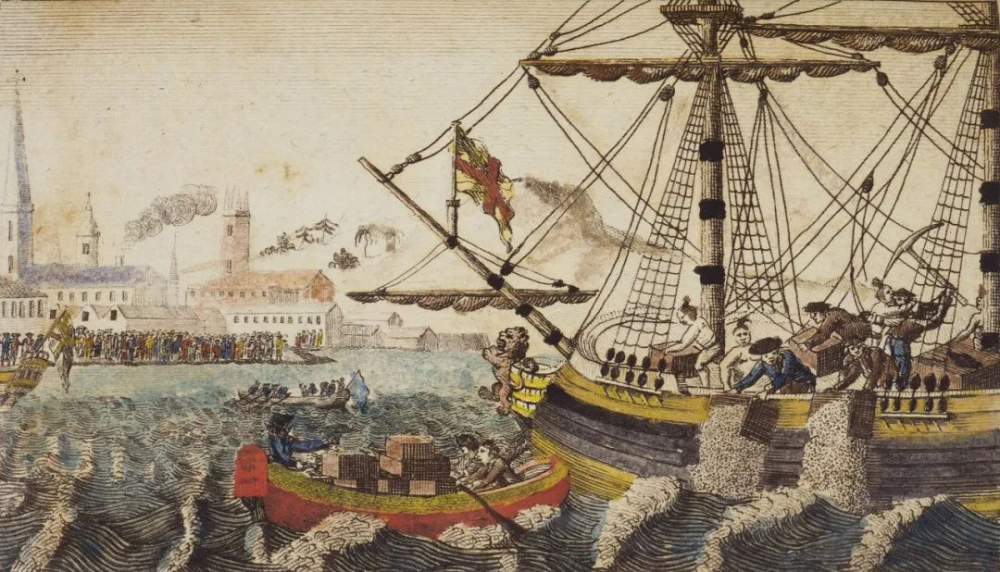
In order to introduce Guyanese coffee beans to Brazil (which was severely prohibited from other countries at the time), Portuguese officers stationed in Brazil captured the heart of the Guyanese governor's wife and succeeded in bringing coffee seeds to Brazil. Since then, coffee has adapted quickly in Brazil, spreading from the north to the southeastern state of Sao Paulo, and by 1845, Brazilian beans accounted for 45% of the world's coffee beans. At present, Brazil is the largest coffee exporter in the world.
The coffee variety introduced into Brazil in the early days was iron pickup, but due to the low production of iron pickup, coffee farmers could not get a corresponding profit return. As a result, a higher-yielding bourbon variety was introduced from Reunion in the 1860s. At present, red bourbon, yellow bourbon, New World and Kaduai are the main varieties in Brazil. Among them, red bourbon can be planted densely, and the yield is 30% higher than that of tin card, the beans are round and short, the berries are sour, the cream and flavor are obvious, and the acidity is pure.
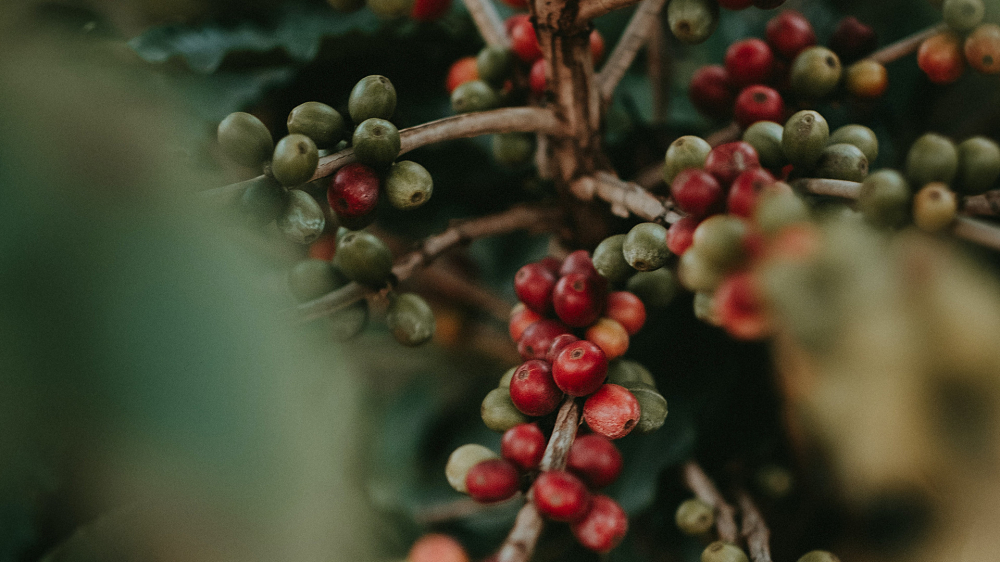
Brazilian boutique coffee producing area
Unlike other coffee-producing countries in Central and South America, Brazil has a swirling territory, giving priority to production, the local elevation is generally low, and coffee trees can be planted on a large scale in flat areas below 1000 meters. When the coffee fruit is ripe, workers use machines to harvest in large quantities, saving a lot of labor. The harvested coffee fruit is then processed by a large raw bean processing plant, and each process is completed under the commercial management mode.
Unlike many exquisite landowners, Brazilian coffee growers have developed varieties of coffee that can grow in the sun without shade in order to make coffee trees more adapted to local conditions. Coupled with the fact that coffee trees are planted at low altitude and do not have enough time to absorb more nutrients and form a unique aroma, Brazilian coffee is mostly balanced, low acidity and soft taste, which is easy for first-time drinkers to accept.
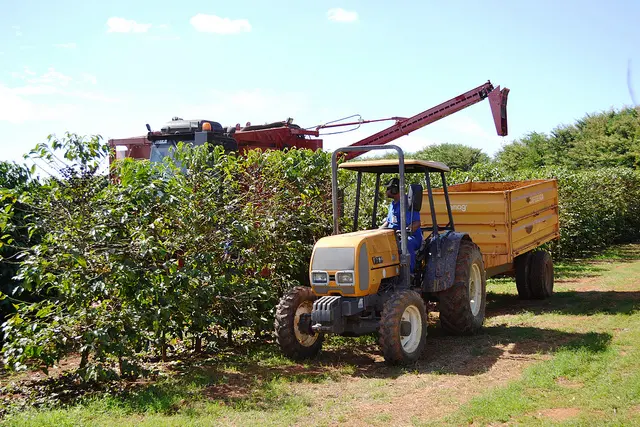
As a coffee-producing country, Brazil naturally has a much larger number and area of producing areas than other countries. At present, a total of 17 states in Brazil produce coffee, mainly in the southeast, with concentrated rainfall and mild climatic conditions in the rainy season, making it very suitable for growing coffee trees. Qianjie believes that the southeastern states of Minas Gerais and Sao Paulo produce the best quality coffee. Among them, the Hirado region in Minas is the first coffee producing area in Brazil to obtain the certification of origin, and almost all the coffee produced is Arabica with good flavor. As a mature coffee producing area, Hilado is the first area in Brazil to become coffee commercialization, and many exporters have invested in large-scale coffee plantations here. The Brazilian rations bean coffee launched in Qianjie is selected from the famous Hirado producing area.
The original intention of the daily rations beans on the front street is to enable friends who have just started to taste the flavor of the producing areas represented by the classics to understand the characteristics and properties of different producing areas, treatments and varieties, so as to add value to their coffee knowledge. Among them, Brazil, as an important coffee country, Qianjie naturally put it on the front line of rations and beans.
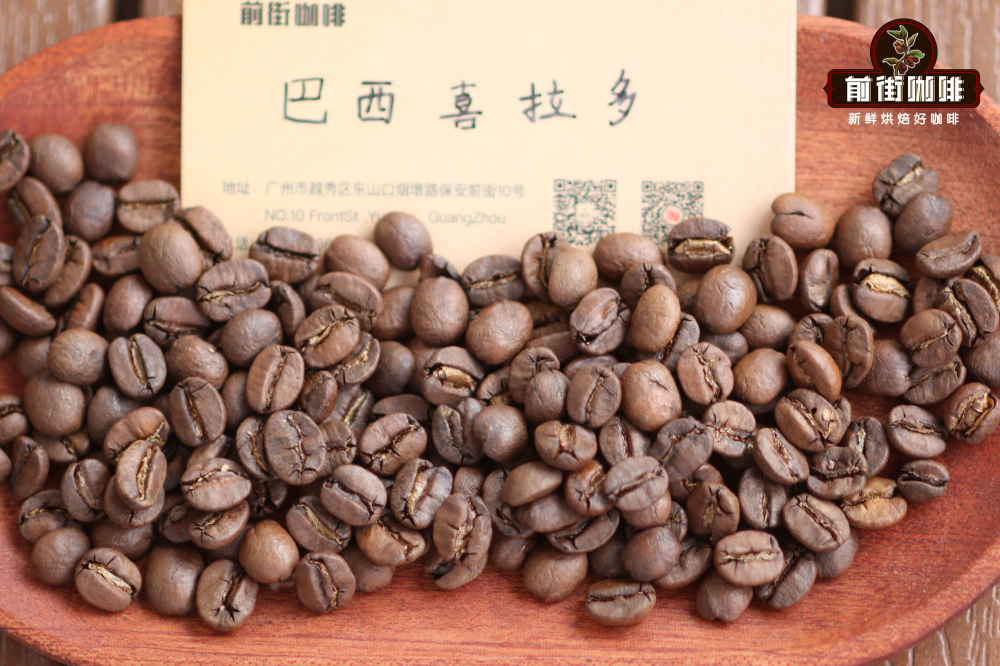
Sun exposure and half-sun exposure
Traditionally, the picking season in Brazil happens to be in the dry season, which is very suitable for drying raw coffee beans by the sun. The traditional sun drying is all laid flat on the ground, which is easy to make the coffee beans get the mixed smell of soil and wood. This leads to uneven quality.
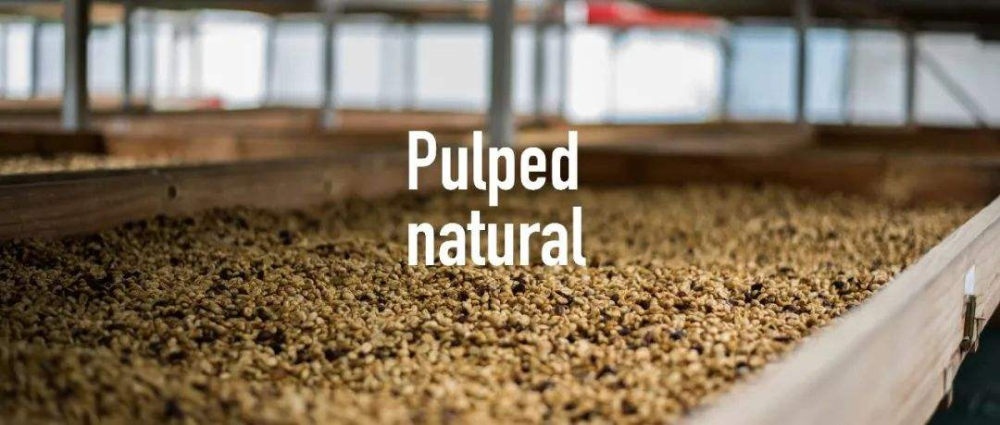
Since 1990, half-sun (or semi-water washing) has been promoted in Brazil, that is, after removing defects and floating fruits by flotation, peel, pulp and part of pectin are removed by machine, then washed, finally dried or dried in a drying room. Compared with the water washing method, half-sun method saves water and labor, which makes the quality of Brazilian coffee greatly improved, showing a cleaner flavor and taste. Of course, there are also more demanding coffee farms will use exquisite sun treatment, such as Qianjie Queen Manor coffee raw beans using sun treatment.
Taste characteristics of Brazilian Coffee
To taste the flavor and taste described by Brazilian coffee, Qianjie recommends freshly roasted coffee beans. Since coffee beans enter the best taste period 4-7 days after roasting, after this time (about a month and a half after roasting) the aroma of the coffee may have been lost and some wood flavor has been formed. In order to avoid this situation, Qianjie has been mentioned in many articles. The most important thing is that Qianjie only delivers freshly roasted coffee beans within 5 days, so that people can taste coffee with good flavor.
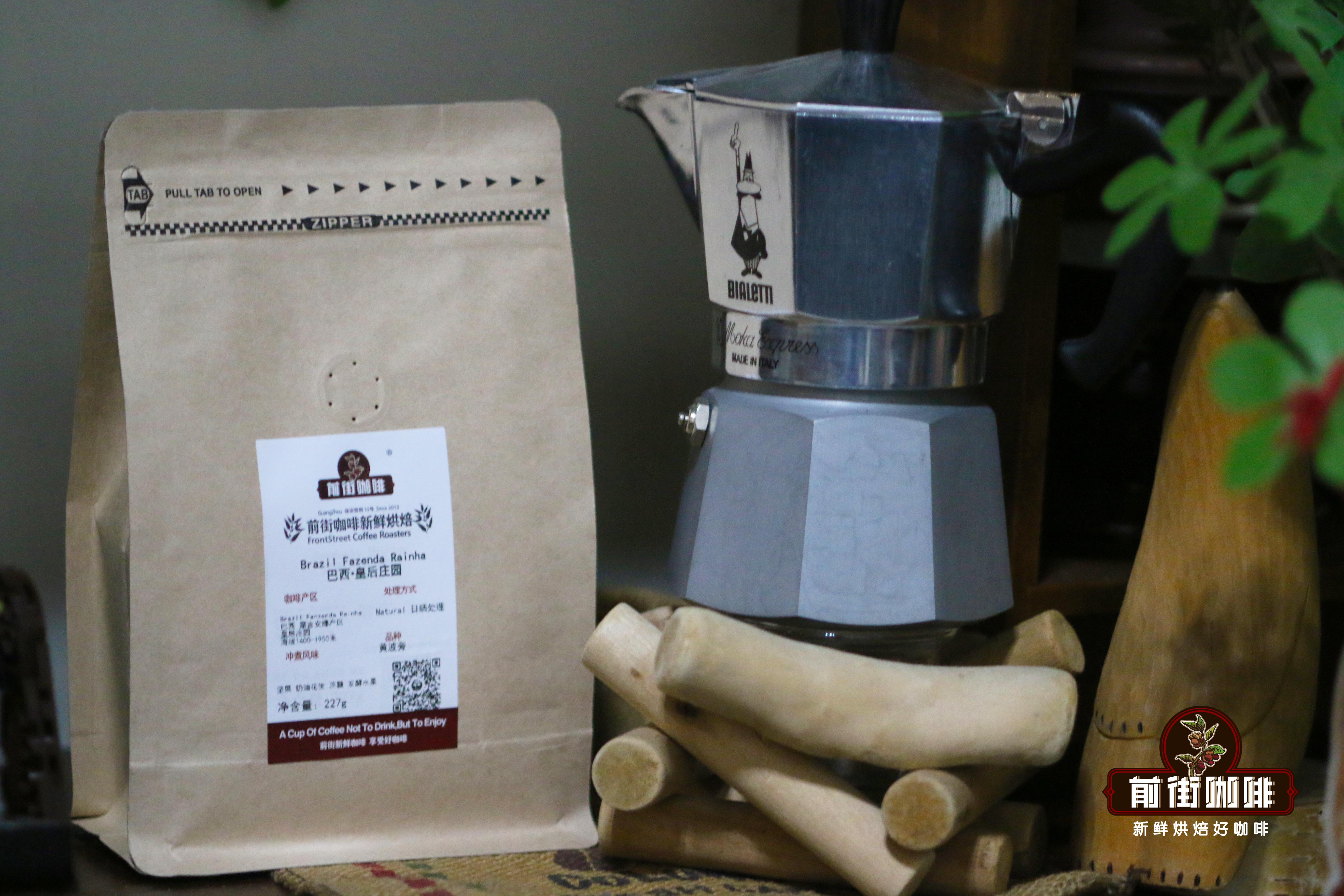
The two Brazilian coffee beans on the front street bean list are full-bodied and bitter, and the front street uses medium-deep roasting to make the coffee beans more caramelized. Considering that medium-depth roasted coffee is heated longer than light-roasted coffee, the internal structure of beans is more fluffy than light-roasted coffee, so it absorbs water better. In order to avoid excessive extraction, Qianjie chose the thickness of No. 20 standard screen with a pass rate of 75% and a water temperature of 88 ℃ with the usual three-stage water injection in Qianjie. And use Kono filter cup to make the extracted coffee taste more round.
Hand washing parameters: water temperature of 88 degrees Celsius, grinding degree of coarse sugar (standard screening rate of 20), 15g coffee beans, powder-water ratio 1:15, three-stage extraction.
The first stage is gently injected with 30 grams of water for steaming for 30 seconds, and the second stage is injected with about 125 grams of water to circle evenly and smoothly outward. Then wait for the coffee liquid to drop, drop to half, inject the last section of water to 225 grams, wait for the coffee to fall behind, the general total extraction time is about 2 minutes.
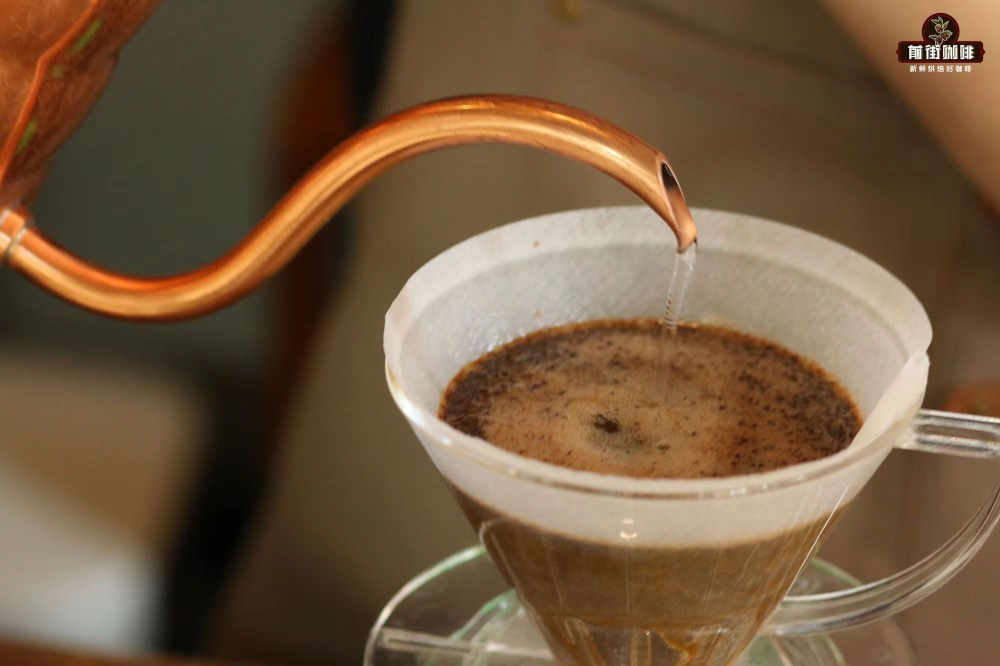
Cooking flavor: Qianjie this Brazilian Hilado rations beans with nutty, chocolate, caramel aroma, return sweet obvious, the overall feeling is more round, chocolate flavor performance is stable and lasting.
Professional coffee knowledge exchange more coffee bean information please follow the coffee workshop (Wechat official account cafe_style)
For more boutique coffee beans, please add private Qianjie coffee on Wechat. WeChat account: qjcoffeex
Important Notice :
前街咖啡 FrontStreet Coffee has moved to new addredd:
FrontStreet Coffee Address: 315,Donghua East Road,GuangZhou
Tel:020 38364473
- Prev

Introduction to Brazilian Coffee Variety Culture description of flavor characteristics of Brazilian red and yellow bourbon coffee beans
Following Cafe Review (official Wechat account vdailycom) found that Brazilian Coffee varieties are roughly divided into two categories: (1) Elaraby Coffee varieties: except Indonesia, both American and African products are acidic, which varies slightly due to different regions. (2)
- Next
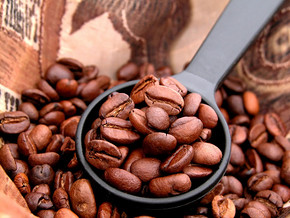
Description of climate, taste and flavor in the growing area of cat shit coffee beans in Hengyungong Manor
Following Jiabei (Wechat official account vdailycom) found that Beautiful Cafe opened a small shop of its own. Brand profile the small grain Kopi Luwak of Yungong Manor in Gaoligong, Baoshan, Yunnan Province has been interpreted by CCTV as the most expensive coffee in shit. This shit is not in history, it is really cat shit. This cat shit has a very high gold content and ranks first in the list of coffee in the world. The date of payment is 199
Related
- Detailed explanation of Jadeite planting Land in Panamanian Jadeite Manor introduction to the grading system of Jadeite competitive bidding, Red bid, Green bid and Rose Summer
- Story of Coffee planting in Brenka region of Costa Rica Stonehenge Manor anaerobic heavy honey treatment of flavor mouth
- What's on the barrel of Blue Mountain Coffee beans?
- Can American coffee also pull flowers? How to use hot American style to pull out a good-looking pattern?
- Can you make a cold extract with coffee beans? What is the right proportion for cold-extracted coffee formula?
- Indonesian PWN Gold Mandrine Coffee Origin Features Flavor How to Chong? Mandolin coffee is American.
- A brief introduction to the flavor characteristics of Brazilian yellow bourbon coffee beans
- What is the effect of different water quality on the flavor of cold-extracted coffee? What kind of water is best for brewing coffee?
- Why do you think of Rose Summer whenever you mention Panamanian coffee?
- Introduction to the characteristics of authentic blue mountain coffee bean producing areas? What is the CIB Coffee Authority in Jamaica?

